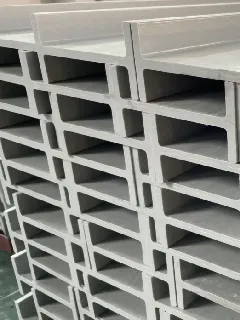loading...
- No. 9, Xingyuan South Street, Dongwaihuan Road, Zaoqiang County, Hengshui, Hebei, China
- admin@zjcomposites.com
- +86 15097380338
- Welcome to visit our website!
Exploring the Benefits and Features of FRP Decking for Modern Construction Projects
Exploring FRP Decking A Durable and Versatile Solution for Modern Construction
In recent years, Fiber Reinforced Polymer (FRP) decking has emerged as an innovative solution in the construction industry, offering remarkable benefits that traditional materials cannot match. As engineers and architects search for ways to enhance structural integrity while minimizing environmental impact, FRP decking stands out due to its unique properties and versatile applications.
What is FRP Decking?
FRP decking is a composite material made from a polymer matrix reinforced with fibers, typically glass or carbon. This state-of-the-art material possesses a high strength-to-weight ratio, making it ideal for various construction applications. The manufacturing process involves combining these materials to create a strong, lightweight structure that can withstand significant loads while remaining easy to transport and install.
Key Advantages of FRP Decking
1. Durability One of the most compelling advantages of FRP decking is its exceptional durability. Unlike traditional materials such as wood or metal, FRP is resistant to corrosion, rot, and UV degradation. This feature makes FRP an ideal choice for environments exposed to harsh weather conditions, including coastal areas or industrial settings, where traditional materials might degrade over time.
2. Lightweight The lightweight nature of FRP decking simplifies installation and reduces labor costs. Because it is much lighter than conventional materials, transportation is easier, and less manpower is required for installation. This attribute is particularly beneficial for projects that involve complex designs or limited accessibility.
3. Low Maintenance FRP decking requires minimal maintenance compared to wood or metal options. It does not require treatments or preservatives to prevent decay, and cleaning can be accomplished with simple soap and water. This ease of maintenance translates into cost savings over the lifespan of the structure.
frp decking

4. Design Flexibility Engineers and architects appreciate the design flexibility that FRP decking offers. It can be molded into various shapes and sizes, allowing for creative and intricate designs. Additionally, the material can be produced in different colors, providing aesthetic options that can enhance the overall appearance of a project.
5. Environmental Impact As sustainability becomes a priority in construction, FRP decking has gained popularity for its lower environmental impact. The longevity and recyclable nature of the material contribute to reduced waste and a smaller carbon footprint compared to more traditional decking options.
Applications of FRP Decking
FRP decking is versatile and can be engineered for multiple applications. It is widely used in bridges, walkways, docks, and platforms, especially in challenging environments like wastewater treatment plants or oil and gas facilities. Additionally, its resistance to chemicals makes it suitable for industrial settings where exposure to caustic substances is a concern.
In recent developments, FRP decking has also found a place in residential construction, particularly in outdoor spaces such as porches and garden decks. Homeowners appreciate not only its durability but also its aesthetic appeal, allowing for beautiful outdoor environments that stand the test of time.
Conclusion
As the construction industry continues to evolve, FRP decking represents a significant advancement in materials technology. With its durability, lightweight properties, low maintenance requirements, and environmental benefits, it is no wonder that FRP decking is becoming a preferred choice for modern construction projects. Whether for bridges, walkways, or residential applications, FRP decking is paving the way toward a more sustainable and efficient future in construction. As awareness and demand grow, we can expect to see even more innovative uses for this remarkable material.
-
The Rise of FRP Profiles: Strong, Lightweight, and Built to LastNewsJul.14,2025
-
SMC Panel Tanks: A Modern Water Storage Solution for All EnvironmentsNewsJul.14,2025
-
GRP Grating: A Modern Solution for Safe and Durable Access SystemsNewsJul.14,2025
-
Galvanized Steel Water Tanks: Durable, Reliable, and Ready for UseNewsJul.14,2025
-
FRP Mini Mesh Grating: The Safer, Smarter Flooring SolutionNewsJul.14,2025
-
Exploring FRP Vessels: Durable Solutions for Modern Fluid HandlingNewsJul.14,2025
-
GRP Structures: The Future of Lightweight, High-Performance EngineeringNewsJun.20,2025
